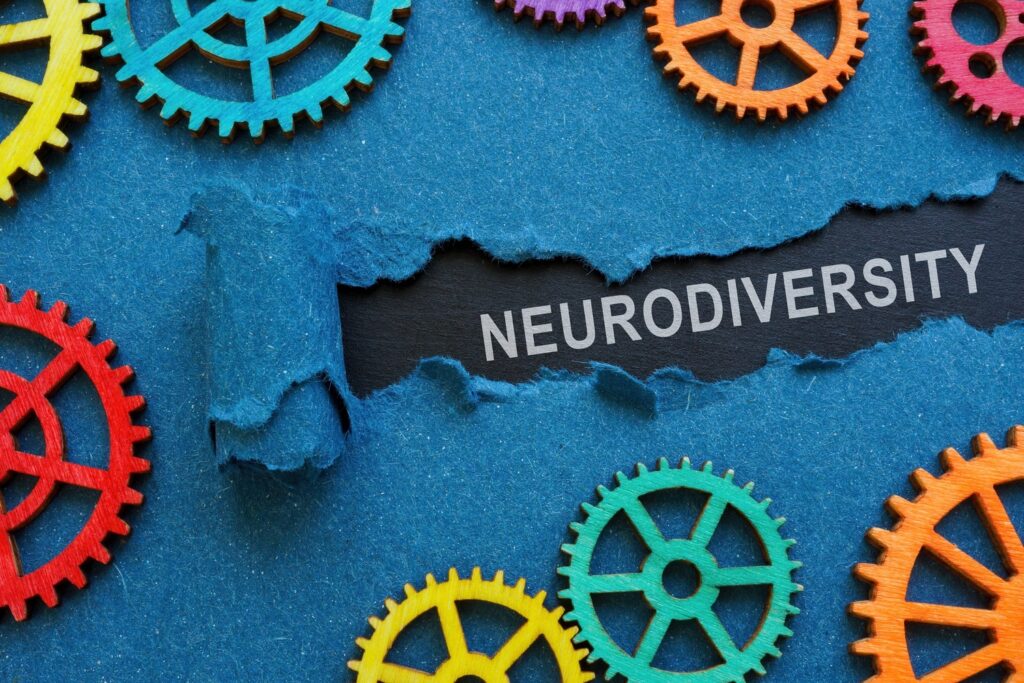
Neurodiversity is a term that recognizes the wide range of differences in how people think, learn, and behave. It’s like acknowledging that people have different eye colors or heights—it’s simply a natural variation. Embracing neurodiversity means understanding that these differences are not flaws but unique strengths.
For children, affirming their neurodiverse identity is crucial for their growth and well-being. Therapy that supports neurodiversity can be a powerful tool in helping children understand themselves, build confidence, and develop the skills they need to thrive.
Neurodiversity Affirming Therapy: A Supportive Approach
Neurodiversity affirming therapy is a relatively new approach in mental health care that shifts the focus from ‘fixing’ what is perceived as different about a child to celebrating and supporting their unique brain function.
- Celebration of differences: This therapy recognizes that variations in brain function are as normal as physical differences. It’s about accepting and valuing these differences.
- Support, not correction: Instead of trying to make a child ‘fit’ into a neurotypical mold, the goal is to provide support and strategies that help them thrive within their own neurodiverse profile.
- Strength-based approach: This therapy focuses on identifying and building upon a child’s strengths, rather than solely addressing challenges.
- Contrast to traditional methods: Traditional therapies often emphasize ‘normalization’ or ‘fixing’ behaviors that deviate from the norm. Neurodiversity affirming therapy takes a different path, respecting individuality.
Ultimately, it recognizes that every child is capable of growth and development, and that their unique way of thinking, learning, and behaving can be assets. For example, a child with strong pattern recognition skills, often associated with autism, might excel in problem-solving or creative tasks.
By fostering a positive and accepting environment, neurodiversity affirming therapy helps children develop self-esteem and confidence in their abilities. It emphasizes understanding and accommodating their specific needs while teaching coping strategies to navigate potential challenges. This approach empowers children to embrace their individuality and build a strong sense of self.
Benefits for Your Child
Neurodiversity affirming therapy offers a transformative approach to supporting children with unique neurological profiles. By shifting the focus from deficits to strengths, this therapy empowers children to thrive and reach their full potential.
1. Self-Acceptance and Confidence
- Building resilience: By validating their experiences, children develop resilience to face challenges and setbacks.
- Reduced social anxiety: Feeling accepted and understood can significantly lower social anxiety often experienced by neurodiverse individuals.
2. Focusing on Strengths
- Personalized learning plans: Therapists can collaborate with educators to create learning environments that capitalize on a child’s strengths.
- Improved motivation: When children see their abilities valued, they are more motivated to learn and grow.
3. Self-Advocacy and Independence
- Communication skills: Therapy can enhance communication skills, enabling children to express their needs and preferences clearly.
- Decision-making skills: By understanding their strengths and challenges, children can make informed decisions about their lives.
As children grow and develop, the benefits of this therapy continue to unfold, empowering them to become confident, independent, and resilient individuals.
Practical Strategies Used in Neurodiversity Affirming Therapy
In neurodiversity affirming therapy, the strategies employed are carefully tailored to respect and support each child’s unique needs and strengths. This begins with tailoring interventions to align with the child’s specific neurological profile. Therapists work closely with the child to identify what works best, ensuring that interventions are effective and meaningful.
Another key aspect is collaborative goal setting. The child, their family, and the therapist come together to set achievable and relevant goals. This collaboration ensures that the therapy is not only effective but also resonates with the child’s interests and aspirations, fostering a sense of ownership and engagement in the process.
Incorporating sensory and emotional regulation techniques is also crucial. Neurodiverse children often experience sensory processing differences, and addressing these through personalized strategies can significantly improve their comfort and participation in various activities. Techniques might include sensory-friendly spaces, mindfulness practices, or tools that help the child manage emotional responses, thereby supporting their overall well-being and growth.
This approach empowers children by honoring their individuality and providing them with the tools they need to navigate their environments confidently.
How Parents Can Support the Process
Supporting your child’s growth through neurodiversity affirming therapy extends beyond therapy sessions and into your home environment.
1. Creating a neurodiversity-affirming home involves embracing your child’s unique needs and strengths. Start by educating yourself and your family about neurodiversity, fostering an atmosphere of acceptance and understanding. Ensure your home is a safe and comforting space where your child feels valued.
2. Incorporating sensory-friendly modifications can make a significant difference. Pay attention to your child’s sensory preferences, such as lighting, noise levels, and textures, and adjust the home environment accordingly. This might mean having quiet spaces for downtime or providing sensory tools like fidget toys or weighted blankets that help your child self-regulate.
3. Promoting open communication is equally important. Encourage your child to express their feelings and preferences, and validate their experiences. Collaborate with them in setting up routines that align with their comfort and needs. By doing so, you not only enhance their sense of autonomy but also reinforce the therapeutic work being done in sessions.
Your active participation in creating a supportive and understanding space can make a profound difference in your child’s ability to thrive, both in therapy and in everyday life.
A Holistic Approach to Your Child’s Growth
Supporting your child through a neurodiversity-affirming approach can have a transformative impact on their development. This method encourages a deep understanding of their individual needs while fostering a sense of self-worth and resilience. As you engage in this process, you’re not only facilitating their growth but also laying the foundation for a future where they can confidently navigate the world on their own terms. Your commitment to this approach will help them thrive in a way that honors their unique strengths and potential.








Leave a Reply